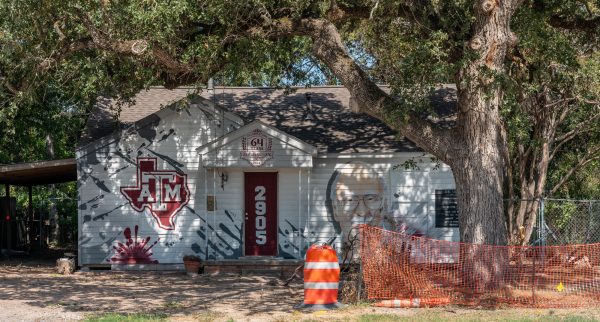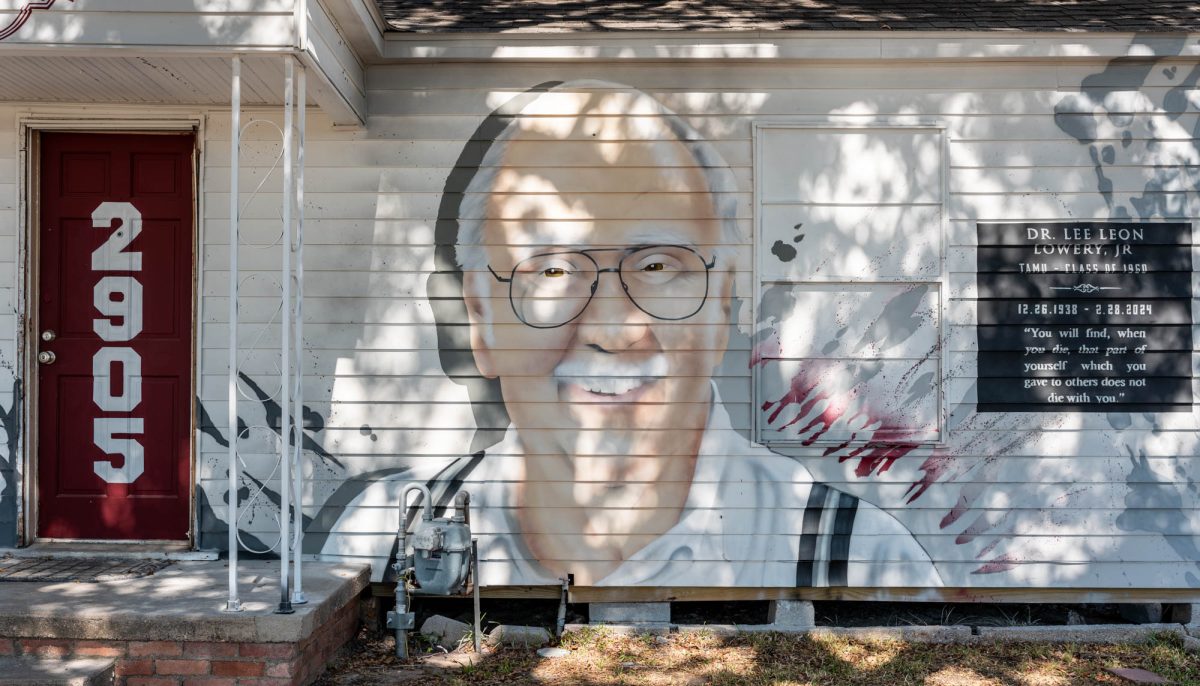An affordable student housing project is being dedicated to a former Texas A&M professor, Lee Lowery, Ph.D., for his 64 years of service in the civil engineering department.
Housing prices are rising in Bryan-College Station, leaving many students, employees and families struggling to find affordable housing. These rising prices have been problematic in the past decade, leading to calls for more housing options, especially for students.
Kelli Lowery, daughter of Lee, was bequeathed her father’s house after his unexpected passing in February.
Although unsure of what to do with the residence, one thing became clear to Kelli: The house should be used to serve the student community as an ode to the tremendous impact Lee had on the university and his students.
“It is stressful enough going to college,” Kelli said. “But trying to figure out how to pay for it … makes it ten times harder.”
Lowery explained that her father always made sure to provide for “underprivileged and underfunded students” during his time at A&M, giving out textbooks and resources to those who could not afford them. Mrs. Lowery said that she wanted to continue his legacy of generosity through this project.
Department of Landscape Architecture and Urban Planning professor Shannon Van Zandt has been studying urban housing for 25 years, focusing particularly on housing for low-income populations. Van Zandt said the housing market has caused challenges for students in recent years.
“Affordable housing is a major problem across the country, and there is a massive shortage of affordable housing everywhere,” Van Zandt said. “Prices in Bryan-College Station have gotten really high. We are the second most expensive housing market in the state.”
Van Zandt said a large factor for the rise in housing prices is the unique market that Bryan-College Station provides due to the expanding student population.
“Bryan-College Station is a very unusual housing market because it does have so much rental, but especially over the past 20 years, a lot of the new rental is focused on students,” Van Zandt said. “It is intended to serve students, but rents have increased dramatically because we are renting to individuals instead of to families.”

This has made it significantly harder for low-income students to find housing at affordable rates.
“We sometimes forget that we have students who come from lower income families … and that they have a real need for housing,” Van Zandt said. “We are seeing a lot of [homes] that are being occupied by large numbers of students, and that has been a difficulty especially for the city of College Station to try to manage.”
The rise in prices has also made it difficult for faculty and staff to afford housing in the area.
“Particularly our very low income custodial and food service workers … cannot afford to live in Bryan-College Station, so they drive sometimes up to an hour to get here to work,” Van Zandt said.
Van Zandt has worked with the City of College Station in response to these challenges, emphasizing the importance of expanding housing options and affordability to meet the needs of the growing student population.
“[College Station] has a new zoning approach to try to produce more affordable housing types,” Van Zandt said. “This is a trend called middle housing. [This] is an effort to try and build something between apartments and single family detached housing … so that we can create different opportunities for renters that include students.”
These new approaches emphasize the importance of affordable housing projects such as the Lee Lowery Legacy Boarding House.
The Boarding House is being used to provide housing specifically to low income, underprivileged students, hopefully cutting down on costs of living for boarders.
The project is still on the pathway toward completion and is being funded and operated solely by Kelli and her husband, who do not reside in Bryan-College Station.
“We have done all of this on our own money,” Kelli said. “But we did have a very generous donation from Mr. Electric.”
The project requires myriad electrical work to allow multiple students to live in the house. Along with Mr. Electric, a local electrician company, Home Depot and Aggieland Plumbing have also generously offered services to further the completion of the Boarding House.
The project still requires some work before its completion, and help from students and other volunteers would be greatly appreciated by Kelli and her family, she said.
“It would really be awesome if we could get hands out there,” Kelli said.
However, deciding what to do with the project after its completion has proven to be a difficult task for her.
“[University officials] wanted us to hand the property over to Texas A&M,” Lowery said. “But I am unwilling to do that.”
Lowery describes that while she loves the university, she “wanted [Lee’s] house to be something separate from that” and decided it would be more beneficial if she continued the operation on her own terms, in fear that the house may not be put to its intended use.
Lowery plans to go engineering department and the A&M aid office to find students that would benefit from the Boarding House.
Editor’s Note: Lowery’s website for donations and needed items can be found here.










